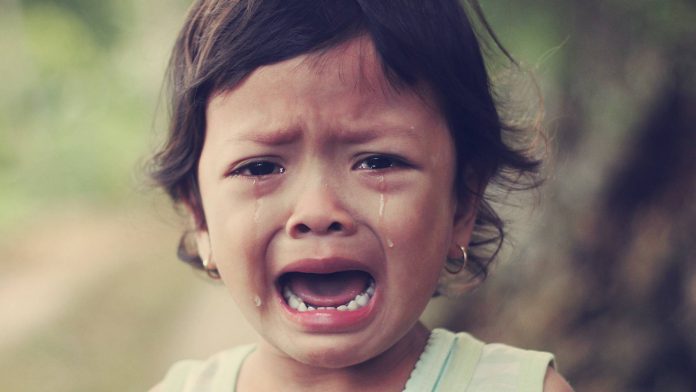My second daughter is the ultimate bunso/youngest – in that she loves getting her way more than anything. And cries her heart out when she doesn’t. Now I’m the type of mom who believes that letting babies cry a bit is not harmful (hey it’s good for their lungs, right?). But I recently realized that my “crying is okay” policy might not be okay with our bunso/youngest because she’s prone to breath-holding spells and can sometimes turn blue crying. I’ve heard about such occurrences from other moms but it’s entirely different when you see your baby crying soundlessly and turning blue. So now I have to ask, what exactly are breath-holding spells, and is it harmful to babies?
What are breath-holding spells?
Breath-holding spells or breath-holding attacks are when babies or toddlers react to sudden pain or upset by not breathing while crying, then turn blue or pale or even faint from it. It is considered a common occurrence even in healthy babies or toddlers, and they can outgrow it by the age of 6 or 7.
There are two types of breath-holding spells:
- Cyanotic breath-holding spells occur when a child stops breathing and turns blue in the face. These spells are triggered when a child gets upset, such as when they are being disciplined. When the child cries and exhales, he/she doesn’t take another breath for a while, which can then turn the child’s face from light blue to almost purple.
- Pallid breath-holding spells are less common and can be more unpredictable as it can occur when a child gets frightened or startled. This time, kids turn very pale or white during the spell.
Both types cause kids to stop breathing for a while and can cause them to lose consciousness or in extreme cases, even seizures.
What can I do if my child passes out during a breath-holding spell?
- Keep the child lying down until the breath-holding spell is over.
- Check your child’s mouth for food or any object that might pose a choking hazard once he/she regains consciousness.
- Keep him/her away from other objects or furniture in case he/she has a seizure.
Children normally start breathing on their own within a minute. If your child remains blue or is not breathing for longer than a minute, call emergency services or your pediatrician immediately.
How can I prevent breath-holding spells?
There are currently no drugs or treatments for breath-holding spells. But parents can watch out and try to minimize triggers that can upset or startle their kids which can then lead to a breath-holding spell. For babies, one way is to blow hard on their faces during a spell, but this might also not work for all babies and older kids. Also, remember that giving in to every little thing your baby wants to prevent tantrums and breath-holding spells might also lead to bigger problems in the future.
Do I need to consult our Pediatrician for my baby’s breath-holding spells?
Although breath-holding spells are generally harmless, it’s also okay to mention it to your Pediatrician the first time it happens. Your doctor can assess (also based on your recounting of the experience) if what occurred was a breath-holding spell or a symptom of another medical condition.
At the same time, iron deficiency anemia might cause breath-holding spells. Your doctor can assess if your child needs to be checked and treated for anemia as it could reduce his/her breath-holding spells.
References: KidsHealth, WebMD
Join our MomCenter Community on our Facebook page and Facebook group for more insights on motherhood and parenting.





